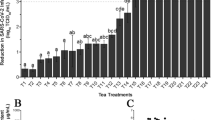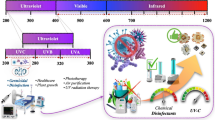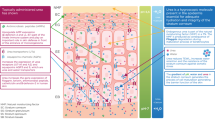Abstract
The aim of the research was to study a new cidofovir/sucralfate drug product to be used as a spray for treating the mucosal and/or skin lesions. The product, i.e., a water suspension of sucralfate (15% w/w) and cidofovir (1% w/w), combines the potent antiviral activity of the acyclic nucleoside phosphonate cidofovir ((S)-1-[3-hydroxy-2-(phosphonomethoxy)propyl]cytosine) and the wound healing properties of sucralfate gel (sucrose octasulphate basic aluminum salt). The product was characterized in vitro with respect to compatibility between drug and carrier, spray particle size, spray deposition, drying kinetics, and drug content and release. An interaction between the two active substances was found. The interaction between sucralfate and cidofovir was counteracted by introducing sodium dihydrogen phosphate (16% w/w) in the preparation. The spray formulation containing cidofovir/sucralfate gel painted the skin and dried quickly to a scab, remaining firmly adhered to the lesions. The therapeutic paint was tested in vivo on lambs infected with orf virus by treating the animals with different cidofovir/sucralfate formulations (0.5% or 1% cidofovir + sucralfate 15% + NaH2PO4 16% w/w) and with sucralfate gel suspension alone as control. The treatment with formulations containing cidofovir and phosphate salt for four consecutive days resulted in a rapid resolution of the lesions, with scabs containing significantly lower amounts of viable virus when compared with untreated lesions and lesions treated with sucralfate suspension alone.






Similar content being viewed by others
References
Zabawski EJ. Jr. A review of topical and intralesional cidofovir. Dermatol Online J. 2000;6:article 3.
Stragier I, Snoeck R, De Clercq E, Van Den Oord JJ, Van Ranst M, De Greef H. Local treatment of HPV-induced skin lesions by cidofovir. J Med Virol. 2002;67:241–5.
Afouna MI, Fincher TK, Zaghloul AA, Reddy IK. Effect of Azone upon the in vivo antiviral efficacy of cidofovir or acyclovir topical formulations in treatment/prevention of cutaneous HSV-1 infections and its correlation with skin target site free drug concentration in hairless mice. Int J Pharm. 2003;253:159–68.
Nettleton PF, Gilray JA, Reid HW, Mercer AA. Parapoxviruses are strongly inhibited in vitro by cidofovir. Antiviral Res. 2000;48:205–8.
Dal Pozzo F, Andrei G, Holy A, Van Den Oord J, Scagliarini A, De Clercq E, Snoeck R. Activities of acyclic nucleoside phosphonates against Orf virus in human and ovine cell monolayers and organotypic ovine raft cultures. Antimicrob Agents Chemother. 2005;49:4843–52.
Geerinck K, Lukito G, Snoeck R, De Vos R, De Clerq E, Vanrenterghem Y, Degreef H. A case of human orf in an immunocompromised patient successfully treated with Cidofovir cream. J Med Virol. 2001;64:543–9.
Perry BD, Randolph TF, McDermott JJ, Sones KR, Thornton PK. Investing in animal health research to alleviate poverty. Nairobi, Kenya: International Livestock Research Institute; 2002.
Lederman ER, Austin C, Trevino I, Reynolds MG, Swanson H, Cherry B, Ragsdale J, Dunn J, Meidl S, Zhao H, Li Y, Pue H, Damon IK. Orf virus infection in children: Clinical characteristic, transmission, diagnostic methods and future therapeutics. Pediatr Infect Dis J. 2007;26:740–4.
Gilray JA, Nettleton PF, Pow I, Lewis CJ, Stephens SA, Madeley JD, Reid HW. Restriction endonuclease profiles of orf virus isolates from the British Isles. Vet Rec. 1998;143:237–40.
Centers for Desease Control and Prevention (CDC). Orf virus infection in humans–New York, Illinois, California, and Tennessee, 2004-2005. JAMA. 2006;295:992–3.
Scagliarini A, McInnes CJ, Gallina L, Dal Pozzo F, Scagliarini L, Snoeck R, Prosperi S, Sales J, Gilray JA, Nettleton PF. Antiviral activity of HPMPC (cidofovir) against orf virus infected lambs. Antiviral Res. 2007;73:169–74.
Nagashima R, Yoshida N, Terao N. Selective binding of sucralfate to ulcer lesion. Arzneimittelforschung/Drug Res. 1980;30:80–3.
Tumino G. On the cicatrization of venous ulcers and of other nature using sucralfate gel for local application. Acta Pharm Technol. 1994;XV:57-67.
Banati A, Chowdhury SR, Mazumder S. Topical use of sucralfate cream in second and third degree burns. Burns. 2001;27:465–9.
Conte U, Colombo P, Zagnoli G, Caramella C. Use of sucralfate humid gel as vehicle for drugs having topic activity and for cosmetics. US Patent. 1993;5:246-697.
Rossi S, Bonferoni MC, Caramella C, Colombo P, Conte U. Rheological study of sucralfate humid gel: a contribution to the comprehension of its stability properties. Eur J Pharm Biopharm. 1992;32:78-81.
Vaira D, Corbelli C, Brunetti G, Menegatti M, Levorato M, Mulè P, Colombo P, Miglioli M, Barbara L. Gastric retention of sucralfate gel and suspension in upper gastrointestinal diseases. Aliment Pharmacol Ther. 1993;7:531–5.
Nettleton PF, Brebner J, Pow I, Gilray JA, Bell GD, Reid HW. Tissue culture-propagated orf virus vaccine protects lambs from orf virus challenge. Vet Rec. 1996;138:184–6.
Gallina L, Dal Pozzo F, McInnes CJ, Cardeti G, Guercio A, Battilani M, Culli S, Scagliarini A. A realtime PCR assay for the detection and quantification of orf virus. J Virol Met. 2006;134:140–5.
Caillé G, Vézina M. Sucralfate drug interaction studies. In: Holande D, Tytgat GNJ editors. Sucralfate: from basic science to the bedside. New York: Springer: 1995. pp. 225–38.
Dal Pozzo F, Andrei G, Holy A, Van Den Oord J, Scagliarini A, De Clerq E, Snoeck R. Activities of acyclic nucleoside phosphonates against Orf virus in human and ovine cell monolayers and organotypic ovine raft cultures. Antimicrob Agents Chemother. 2005;49:4843–52.
Izzedine H. Am J Kidney Dis. 2005;45:804–17.
Acknowledgments
The authors are grateful to Prof. M.C. Bonferoni (Department of Pharmaceutical Chemistry, University of Pavia) for her valuable help in rheology experiments. The authors want to acknowledge Lisapharma (Erba, Italy) and Gilead (Foster City, USA) for the kind supply of drug substances. The project was supported by Italian Ministry for Education, University and Research through PRIN 2006. The support of Emilia-Romagna region was acknowledged as well.
Author information
Authors and Affiliations
Corresponding author
Rights and permissions
About this article
Cite this article
Sonvico, F., Colombo, G., Gallina, L. et al. Therapeutic Paint of Cidofovir/Sucralfate Gel Combination Topically Administered by Spraying for Treatment of orf virus Infections. AAPS J 11, 242–249 (2009). https://doi.org/10.1208/s12248-009-9101-8
Received:
Accepted:
Published:
Issue Date:
DOI: https://doi.org/10.1208/s12248-009-9101-8




